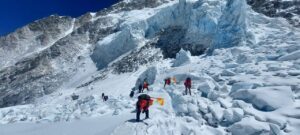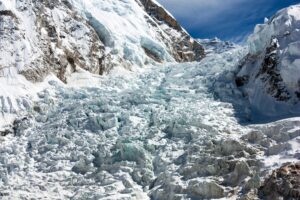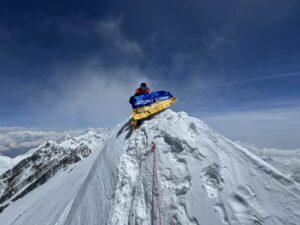Mountains marking the borders between two countries may unite or separate. Everest seemed to represent the former when Chinese and Nepali topographers remeasured the mountain and jointly announced their result — 8,848.86m. Now, COVID has shown the other side of bilateral relations.
While all attention has focused on Everest’s south side, the north side has embraced a tourism boom. And the China-Tibet Mountaineering Association has approved 21 climbing permits, all to Chinese nationals, to climb Everest from its Tibetan side.
Prudent move or political gesture?
According to the (scarce) news shared, Base Camp is operating less like a climbing hub than a laboratory. “The CTMA set up a checkpoint 300m from Base Camp, keeping non-related persons outside,” Xinhua News reported. “Daily disinfection is required in climbers’ sleeping camp, canteen, washrooms, and all other common areas.
It went on: “Climbing teams are fully equipped with enough masks, sanitizer, medical gloves, and other medical equipment for at least one month. All personnel and cars coming to the camp must be disinfected. Anyone who develops symptoms of COVID-19 will be transported to local medical facilities.”

Sanitizer instead of “good morning tea” at China’s Everest Base Camp. Photo: Xinhua/Wang Qin’ou
All fair enough: They are taking steps to prevent any spread of the disease. But what has caused an international flap is that China is apparently concerned its nationals could catch the disease from people climbing from Nepal. So they want to create some sort of barrier, line, or other demarcation at the summit.
Nyima Tsering, the head of the Tibetan Sports Bureau, said that they are in touch with the Nepal side of the mountain, in order to organize a strategy to avoid contact between groups.
To ensure this, the Chinese are going to set up a “separation line” on the summit itself. They have already dispatched guides to take care of the task. It is not clear what it will be. A line of red dye in the snow? A fence? How it will be enforced? Apparently, they are still working on the details.
Everyone is wearing masks
Perhaps the Chinese simply want to ensure that their 21 climbers have a few square centimetres on a summit likely to be a-swarm at times with hundreds of climbers from the Nepal side. In fact, the chances of getting COVID atop Everest are next to nil. Although the summit area is relatively small, about 25 square metres, virtually everyone is wearing oxygen masks. It’s breezy. The virus likely wouldn’t carry well in the thin air. Climbers won’t remove their masks and shout at each other from arm’s length.
Nor are the teams likely to take off their gloves and hug in congratulations. While it’s true that safety measures in Nepal have failed abysmally, everyone has learned to stay in their own bubbles.
Some Nepali officials are not happy with what they consider a political pose impossible to enforce, as Nepali authorities told The Kathmandu Post. Moreover, erecting a line on any border is always extremely provocative.
“No one is allowed to create a ‘separation line’ at the summit,” said Rudra Singh Tamang, director general of the Department of Tourism. “Everest is an international boundary.”
In the end, it is unclear whether the roughly 300 climbers, foreigners and Nepalis, will mind staying on “their” side of the mountain, and what this “separation line” will look like. Most importantly, will the division remain, or will the wind sweep it away after the climbers return to thicker air?






